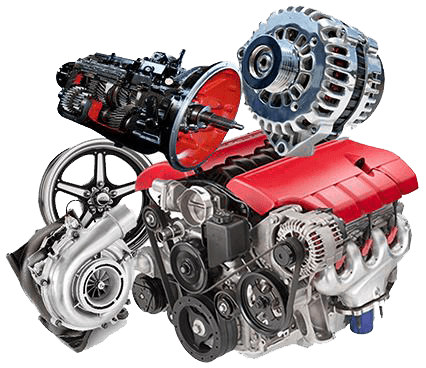Comprehensive Review of a Subcompact Vehicle's Powertrain Capabilities
In the world of vehicle engineering, the powertrain of a subcompact auto stands as an essential nexus where efficiency, technology, and efficiency converge. From the engine's ruthless pursuit of ideal performance to the transmission's smooth choreography of power distribution, every component plays a critical function in specifying the general driving experience.
Engine Efficiency Analysis
In assessing the engine efficiency of the subcompact cars and truck, an extensive evaluation exposes its performance and power output under numerous driving conditions. The subcompact vehicle's engine, a critical element of its powertrain system, shows commendable efficiency metrics. The engine's performance is remarkable, as it optimizes gas usage without endangering power delivery. Under regular driving conditions, the engine operates efficiently, showcasing an equilibrium between performance and fuel economic situation.
Furthermore, when based on rigorous testing circumstances such as high-speed velocity or uphill climbs, the engine shows strength and responsiveness. Its power result remains consistent, supplying adequate acceleration when needed. The subcompact automobile's engine is tailored to satisfy the needs of city driving, where quick acceleration and nimble maneuverability are necessary.
In addition, the engine's design integrates contemporary technologies that improve its performance qualities. Functions like turbocharging or variable shutoff timing add to enhanced power shipment and torque, improving the general driving experience. In final thought, the engine performance of the subcompact auto emphasizes its capacity to supply effective and trusted power output across numerous driving problems.
Transmission Effectiveness Assessment
Assessing the subcompact vehicle's transmission effectiveness includes assessing its efficiency in transferring power effortlessly throughout different driving conditions. The performance of a transmission system is crucial as it straight influences the total performance and gas economic situation of the lorry.
One common approach made use of to examine transmission effectiveness is via dynamometer screening, where the power outcome from the engine is determined at the input and outcome shafts of the transmission. Inconsistencies between input and result power can show the level of effectiveness of the transmission system. Furthermore, real-world driving tests are performed to analyze exactly how the transmission carries out in functional scenarios. By evaluating these facets, designers can identify locations for enhancement and optimize the transmission system for better overall efficiency and effectiveness.
Fuel Effectiveness Examination
The analysis of the subcompact cars and truck's fuel performance includes a comprehensive evaluation of its consumption rates under numerous driving conditions. Gas efficiency is an essential element in assessing the general efficiency and cost-effectiveness of an automobile. By measuring the amount of gas consumed per system range traveled, normally expressed as miles per gallon (MPG) or litres per 100 kilometers (L/100 km), the performance of the subcompact vehicle's powertrain can be figured out.

Additionally, improvements in modern technology, such as crossbreed systems, regenerative stopping, and automated start-stop systems, have actually dramatically improved fuel effectiveness in contemporary subcompact cars. Producers continue to enhance and introduce powertrain parts to improve gas performance while fulfilling efficiency needs and ecological laws. Evaluating a subcompact vehicle's fuel efficiency provides useful understandings for customers looking for cost-effective and sustainable transportation solutions.
Acceleration and Handling Analysis
An essential aspect of evaluating the efficiency capacities of a subcompact cars and truck exists in examining its velocity and taking care of attributes. Acceleration is important as it identifies just how rapidly the automobile can reach desired rates, affecting overall driving experience and maneuverability in numerous website traffic problems. opel corsa engine. Subcompact automobiles are often favored for their nimbleness and agility, making acceleration from standstill and during surpassing maneuvers necessary aspects to take into consideration
When it involves dealing with, a subcompact vehicle's ability to browse corners, preserve stability at broadband, and offer a responsive guiding feeling are critical. Limited city roads and winding roadways require exact handling to make certain chauffeur self-confidence and safety. Variables such as suspension tuning, weight circulation, and tire hold play substantial roles in determining a subcompact auto's total handling expertise.

Powertrain Components Introduction
Upon delving into the ins and outs of a subcompact car's performance, a detailed exam of its powertrain elements is vital to grasp the car's mechanical bases. click over here The powertrain of a subcompact car usually contains the engine, transmission, driveshaft, differential, and axles. The engine, usually a smaller displacement four-cylinder in a subcompact cars and truck, is liable for creating power by burning fuel and converting the power right into mechanical force. The transmission, whether manual or automatic, transfers this power to the wheels through the driveshaft. The differential enables More hints the wheels to turn at different speeds when turning, improving maneuverability. Moreover, the axles transfer power from the differential to the wheels, allowing motion. Understanding how these components interact is critical in assessing a subcompact car's total efficiency, performance, and driving characteristics. In the next section, we will delve deeper right into the details duties and communications of each powertrain element to offer a comprehensive summary of a subcompact vehicle's powertrain capabilities.
Final Thought
To conclude, the subcompact auto's powertrain abilities have been completely examined in terms of engine efficiency, transmission efficiency, gas velocity, effectiveness, and handling. The detailed review highlights the importance of each part interacting seamlessly to provide optimum performance. Generally, the powertrain elements of the subcompact car have been located to be well-balanced and effective, making it a trusted option for drivers seeking a portable and fuel-efficient vehicle.
In the realm of vehicle engineering, the powertrain of a subcompact cars and truck stands as an important nexus where effectiveness, technology, and efficiency assemble.In analyzing the engine efficiency of the subcompact car, an extensive analysis exposes its effectiveness and power outcome under numerous driving problems.Assessing the subcompact automobile's transmission effectiveness includes evaluating its efficiency in sending power seamlessly across numerous driving basics problems. Recognizing just how these elements work with each other is important in evaluating a subcompact automobile's general performance, efficiency, and driving characteristics.In verdict, the subcompact vehicle's powertrain capabilities have been thoroughly analyzed in terms of engine performance, transmission efficiency, fuel efficiency, velocity, and handling.